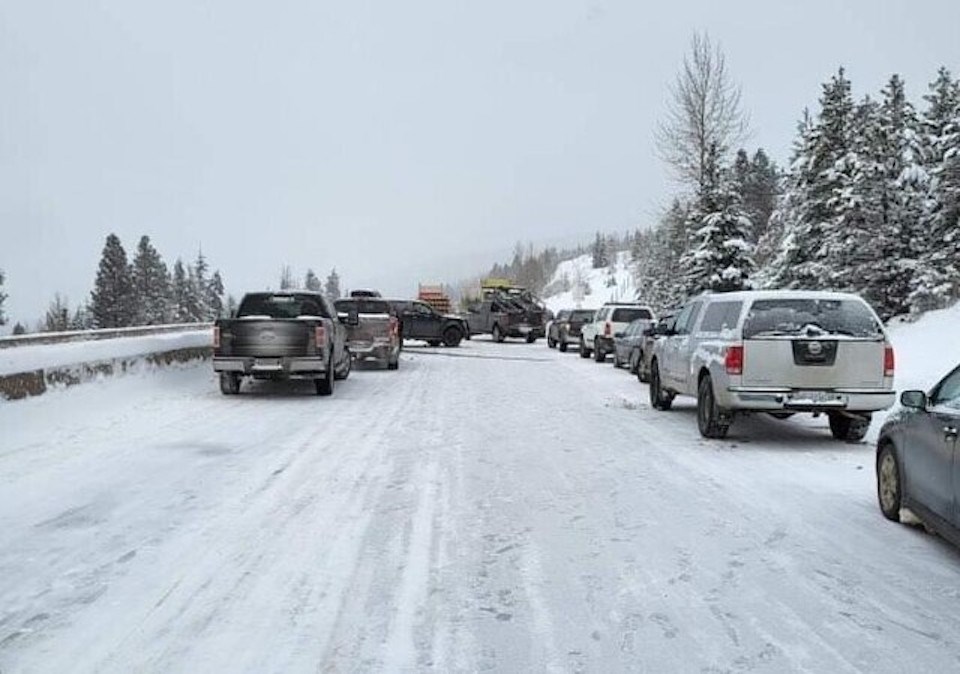It's readily acknowledged that climate change is causing more forest fires in British Columbia — but its impact on winter storms is only beginning to be understood.
Following a blast of extreme cold, multiple highway closures, heavy snowfalls, freezing ice warnings and a tragic bus accident, Castanet posed the question to B.C.'s Ministry of Transportation: is climate change making our highways more dangerous?
Not unexpectedly, the ministry dodged the question, among others asking whether extreme weather events are making it harder to maintain our highways to accepted safety standards.
But the answers do provide some insight into the province's response to climatic events like the destruction of the Coquihalla Highway after catastrophic rains wiped out huge chunks of the highway in November 2021.
Scientists say the relationship between rising global temperatures and more intense winter storms may appear counterintuitive, but such events are becoming more common.
There have been at least 30 weather and accident-related highway closures and travel advisories in the southern half of B.C. since the beginning of December that Castanet has reported on — plus more in Northern B.C.
"During summer, you can have extreme high temperatures, kind of life-threatening high temperatures, such as they've experienced in India and Pakistan in recent years. And you also can have, during winter, these extreme cold conditions," says John Clague, a professor of geosciences at Simon Fraser University.
Clague says the changing climate is slowing down the jet stream, letting the storms it brings linger over areas for longer.
Kent Moore, an atmospheric physics professor at the University of Toronto, says larger undulations in the jet stream also bring Arctic air farther south, creating intense snowstorms.
"British Columbia is on the front line of our changing climate," says the Ministry of Transportation and Infrastructure.
"While the government is working urgently to fight climate change, we are also working to make communities and infrastructure resilient to the impacts that we are feeling today. The atmospheric river event of 2021 that caused catastrophic damage to highways and bridges is an example why the province is improving the resiliency of its transportation infrastructure in anticipation of more frequent and more severe storms."
The ministry said government is investing more in highway maintenance and has been "making improvements" to maintenance contracts.
A ministry spokesperson said recently introduced higher standards require "a more proactive approach" to winter maintenance, such as returning Class A highways to bare pavement within 24 hours of a winter weather event rather than the previous 48 hours, "increasing patrol frequencies in anticipation of a weather event, and requiring the use of remote weather information systems to forecast when a weather event will occur and to spread anti-icing chemicals beforehand."
The ministry acknowledged more frequent storms "will mean added challenge for our highway maintenance contractors," and it added it continuously monitors their performance to ensure standards are met.
"As in the past, during extreme weather events, it may be necessary to close highways on short notice to protect public safety while crews do their work," the ministry said.
"Closures are generally based on the weather forecast, observed road conditions, information from weather stations on highways, the capacity of crews to keep up with rapidly accumulating snow or rain, and the anticipated conditions on a particular highway — particularly if those conditions are expected to change quickly."
The ministry says it has developed directives for incorporating climate adaptation into engineering designs, requiring planners to evaluate risk and include climate adaptation measures.
Over nine years, $295 million will be spent on culvert and drainage improvements, highway and bridge erosion protection, creek channel stabilization and monitoring systems for ground saturation and weather event impacts. That's on top of $8 billion in transportation capital projects, expansion, preservation, and transit programs.
But, an industry insider with a background in highway design, construction and maintenance says answers from Okanagan highway contractor AIM Roads and the ministry over alleged failings in maintenance this winter amount to little more than "spin."
The source says both parties have a "vested interest in making excuses for their mishandling" of snowstorms.
He disputed claims of higher standards, saying they aren't met, and that previous contractors were "held to a higher standard."
As to the increasing severity of storms, "A good contractor will be storm watching and have resources in the field as a storm is imminent or just commencing, not sending out workers, ill resourced, into the field reactively after the storm has hit. It’s too late by then," the source added.
The Coquihalla hasn't been the only highway to get walloped.
Highway 8 near Merritt was the hardest-hit Interior highway during the 2021 floods and only officially reopened in November.
– with files from The Canadian Press

